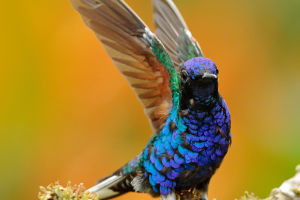Foxes are incredibly agile and highly adaptable animals found in a wide range of habitats worldwide.
Known for their cleverness and cunning, foxes have been portrayed in many cultures as symbols of wisdom and trickery.
However, their real-life behavior and lifestyles are far more nuanced, showing complexity and diversity that go beyond these cultural stereotypes.
Belonging primarily to the Canidae family, foxes are smaller and more independent than their canine relatives, such as wolves and dogs. One of the most recognizable species is the red fox, which boasts a widespread range that includes North America, Asia, Europe, and even parts of North Africa.
Red foxes are typically known for their reddish-orange fur, though their color can vary, including shades of white, gray, and silver. This diversity in coat color allows them to blend into a variety of environments, from dense forests to open grasslands and even urban areas, showcasing their remarkable adaptability.
Foxes are omnivores, meaning they eat a wide variety of foods. Their diet includes small mammals, birds, insects, and even fruits and vegetables, which offers them flexibility in how they source nourishment.
This ability to consume such a diverse range of foods proves essential in times of scarcity, allowing foxes to survive when one type of prey might be less available.
Their hunting strategies often display remarkable skill and patience. Foxes are known for silently stalking their prey, biding their time until the perfect moment to strike quickly and effectively.
In addition to their hunting prowess, foxes are also known to store excess food, preparing for future times of need when resources might be limited. This forward-thinking behavior underscores their adaptability and survival instincts.
These animals are not only clever when it comes to hunting but also when facing natural predators. When threatened by larger animals like wolves or dogs, foxes often rely on their agility and deep knowledge of their surroundings to outmaneuver and escape danger.
They are adept at using the terrain to their advantage, such as darting into narrow caves or disappearing into tall grass to elude their pursuers. This combination of physical skill and environmental awareness helps them evade many natural threats and survive in a world full of predators.
Despite their natural abilities as hunters and survivors, foxes frequently face dangers from humans. In many regions, foxes are viewed as pests that destroy crops or raid poultry farms, making them targets for hunting and other forms of human interference. Yet, foxes are not universally seen in a negative light.
In fact, in certain cultures, they are considered symbols of good fortune. In Japan, for instance, foxes play a significant role in Shinto, where they are seen as the messengers of Inari, the god of rice and agriculture.
Foxes in this context are symbols of prosperity, harvest, and wealth, and their images can be found at many shrines throughout the country. Folklore often casts them in magical or wise roles, reflecting their deep cultural significance.
Similarly, in European tales, foxes are frequently depicted as both wise and cunning, a dual characteristic that speaks to their complex nature. The fox in Aesop's Fables is one such example, often portrayed as a clever and resourceful character, embodying the traits of intelligence and strategic thinking.
The social structure of foxes is equally fascinating. They are capable of living solitary lives, but they can also form small family units. Many foxes, particularly those that mate for life, will raise their young together.
While the male fox's role in rearing the cubs is somewhat limited after their birth, he nonetheless plays an important part in providing food for the family.
Once born, the cubs stay with their parents for a few months before venturing out on their own. During this time, they learn essential survival skills, such as hunting and defending themselves, which are vital for their future independence.
Foxes have captured the imagination of people worldwide, and their adaptability, intelligence, and survival skills have made them a subject of fascination. They are not just predators in the wild, but creatures that have found a way to live alongside humans, often in secret, in environments where other animals might struggle.
Moreover, foxes have become integral parts of human culture, featuring prominently in folklore, mythology, and even religion. Their dual nature—as cunning and clever survivors, as well as symbols of good fortune and wisdom—gives them a special place in the natural world and human society alike.


